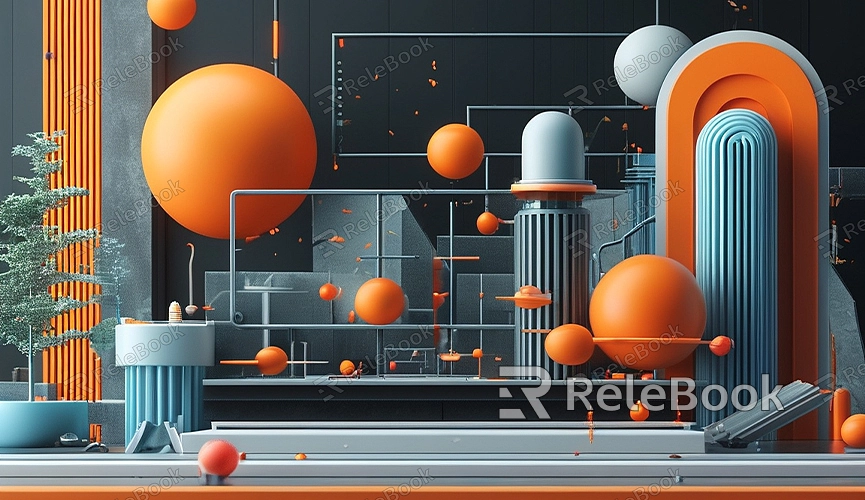How to render blender animation to avi
Creating animations in Blender is a highly engaging and creative process. Whether you’re making a short film or bringing your 3D models to life, Blender offers powerful tools to help you achieve your goals. However, once you’ve completed your animation, the next step is to render it into a video format for sharing or publication. AVI is a common video format suitable for most video players and editing software. So, how do you render an animation to AVI format in Blender? This guide will walk you through the steps and provide some optimization tips.
Preparation Before Rendering
Before you start rendering your animation, make sure you’ve completed all the necessary settings. This includes keyframe animation, lighting, materials, and camera positions. Ensure every detail is as expected because rendering is a time-intensive process, and any small error can waste a significant amount of time.

Setting Output Format to AVI
To render your animation to AVI format in Blender, you need to adjust the rendering settings. Here are the steps:
1. Open Output Settings: In Blender’s “Properties” panel, click on the screen icon to access the “Render Properties” tab.
2. Select Output Format: In the “Output Properties” tab, find the “Output” section, click the “File Format” dropdown menu, and choose either “AVI JPEG” or “AVI Raw.” AVI JPEG uses JPEG compression, resulting in smaller file sizes but slightly lower quality, while AVI Raw is uncompressed, providing higher quality but larger file sizes. Choose according to your needs.
3. Set Output Path: In the “Output” section, click the folder icon to select the path where the rendered animation will be saved. Ensure the path is correct to easily locate the file once rendering is complete.
Adjusting Render Parameters
Several parameters need adjustment based on your project requirements:
- Frame Rate: The frame rate determines how many frames are played per second. Common frame rates are 24fps or 30fps. Choose a frame rate that suits the style of your animation and the target platform.
- Resolution: In the “Dimensions” tab, you can set the resolution of your animation. Typically, 1920x1080 (Full HD) is a good choice. If your animation requires higher clarity, you can opt for 4K resolution, but this will increase rendering time.
- Samples: In the “Render Properties” tab, adjust the “Samples” to control rendering quality. Higher sample numbers reduce noise in the animation and improve quality but also increase rendering time.
Rendering the Animation
Once all settings are configured, you can start rendering your animation:
1. Start Rendering: Click on the “Render” menu at the top of the screen, then select “Render Animation.” Blender will begin rendering your animation frame by frame, and you can monitor the progress in the render window.
2. Rendering Time: Animation rendering typically takes a considerable amount of time, depending on the length, resolution, and sample numbers of the animation. For longer animations, it’s advisable to render during idle times or use Blender’s batch rendering feature to distribute the task across multiple machines to speed up the process.
Pros and Cons of AVI Format
While AVI is a versatile format, it has its pros and cons:
- Pros: AVI is highly compatible and can be played by almost any video player. Additionally, AVI files generally retain high quality, especially with AVI Raw, which ensures that original quality is preserved without compression.
- Cons: AVI files can be large, particularly when uncompressed as AVI Raw. For longer animations, file sizes might become impractical. If you need to upload the file online or share it via email, further compression might be necessary.
Optimization Tips for Better Rendering
If you want to enhance your animation’s quality during rendering, consider these optimization tips:
- Use High-Quality Textures: High-quality textures can add richness to your animation and improve overall visual effects. If you need many high-quality 3D textures and HDRIs for creating models and virtual scenes, you can download them for free from [Relebook](https://textures.relebook.com/) to enrich your project details.
- Combine Lighting and Materials: Proper use of lighting and materials can significantly enhance the realism of your animation. Especially in outdoor or complex lighting environments, suitable HDRI images can provide more realistic lighting effects for your scene.
- Use Node-Based Post-Processing: Blender’s built-in “Compositor” allows for post-processing adjustments, such as color balance, brightness, and contrast, to make your final animation more vibrant.
Rendering animation to AVI format in Blender is not complex; just adjust the output settings and ensure all parameters meet your needs. With appropriate optimization, you can ensure that your final AVI animation meets high standards without consuming excessive storage space.
Whether you’re a novice or an experienced 3D artist, Blender provides powerful tools to help you create stunning animations. If you need beautiful 3D models, download them from [Relebook](https://3dmodels.relebook.com/), which offers a vast array of premium 3D resources to help you with your creative projects.

